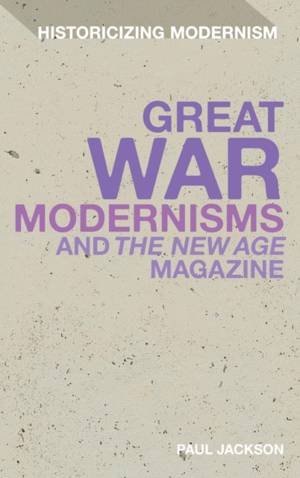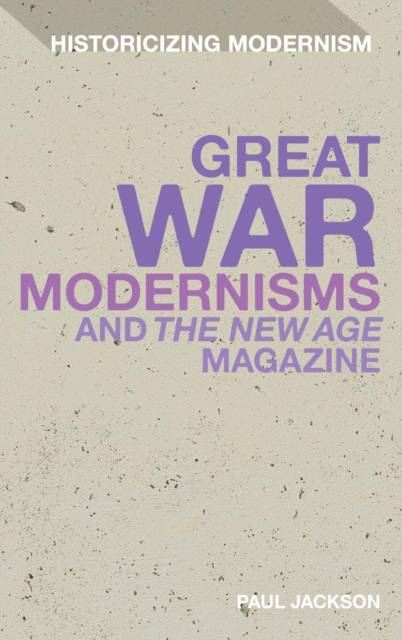
Bedankt voor het vertrouwen het afgelopen jaar! Om jou te bedanken bieden we GRATIS verzending (in België) aan op alles gedurende de hele maand januari.
- Afhalen na 1 uur in een winkel met voorraad
- Gratis thuislevering in België vanaf € 30
- Ruim aanbod met 7 miljoen producten
Bedankt voor het vertrouwen het afgelopen jaar! Om jou te bedanken bieden we GRATIS verzending (in België) aan op alles gedurende de hele maand januari.
- Afhalen na 1 uur in een winkel met voorraad
- Gratis thuislevering in België vanaf € 30
- Ruim aanbod met 7 miljoen producten
Zoeken
Omschrijving
The literary magazine The New Age brought
together a diverse set of intellectuals. Against the backdrop of the First
World War, they chose to write about more than modernist art and aesthetics. By
closely reading and contextualizing their contributions, Paul Jackson's study
engages with the political and philosophical responses of literary artists to
modernity. Jackson demonstrates the need to interpret modernism not merely as an
aesthetic phenomenon, but inherently linked to politics and philosophy.
By placing the writing of a canonical modernist, Wyndham Lewis, against a
figure usually excluded from the modernist canon, H.G. Wells, Jackson examines
further a wartime modernism that embraced socialist and political views. This
reinterpretation of modernism provides a historicised understanding of the
politicised hopes of artists promoting revolutionary forms of cultural renewal.
Considering modernist writers' relationship between politics, philosophy and
aesthetics in the context of total war Jackson encourages new
cultural-historical definitions of modernism. In addition this study provides
the first close analysis of cultural contributions from a leading wartime
Little Magazine, tracing the radical modernist debates that developed in its
pages.
together a diverse set of intellectuals. Against the backdrop of the First
World War, they chose to write about more than modernist art and aesthetics. By
closely reading and contextualizing their contributions, Paul Jackson's study
engages with the political and philosophical responses of literary artists to
modernity. Jackson demonstrates the need to interpret modernism not merely as an
aesthetic phenomenon, but inherently linked to politics and philosophy.
By placing the writing of a canonical modernist, Wyndham Lewis, against a
figure usually excluded from the modernist canon, H.G. Wells, Jackson examines
further a wartime modernism that embraced socialist and political views. This
reinterpretation of modernism provides a historicised understanding of the
politicised hopes of artists promoting revolutionary forms of cultural renewal.
Considering modernist writers' relationship between politics, philosophy and
aesthetics in the context of total war Jackson encourages new
cultural-historical definitions of modernism. In addition this study provides
the first close analysis of cultural contributions from a leading wartime
Little Magazine, tracing the radical modernist debates that developed in its
pages.
Specificaties
Betrokkenen
- Auteur(s):
- Uitgeverij:
Inhoud
- Aantal bladzijden:
- 192
- Taal:
- Engels
- Reeks:
Eigenschappen
- Productcode (EAN):
- 9781441180087
- Verschijningsdatum:
- 13/09/2012
- Uitvoering:
- Hardcover
- Formaat:
- Genaaid
- Afmetingen:
- 157 mm x 236 mm
- Gewicht:
- 430 g

Alleen bij Standaard Boekhandel
+ 593 punten op je klantenkaart van Standaard Boekhandel
Beoordelingen
We publiceren alleen reviews die voldoen aan de voorwaarden voor reviews. Bekijk onze voorwaarden voor reviews.









